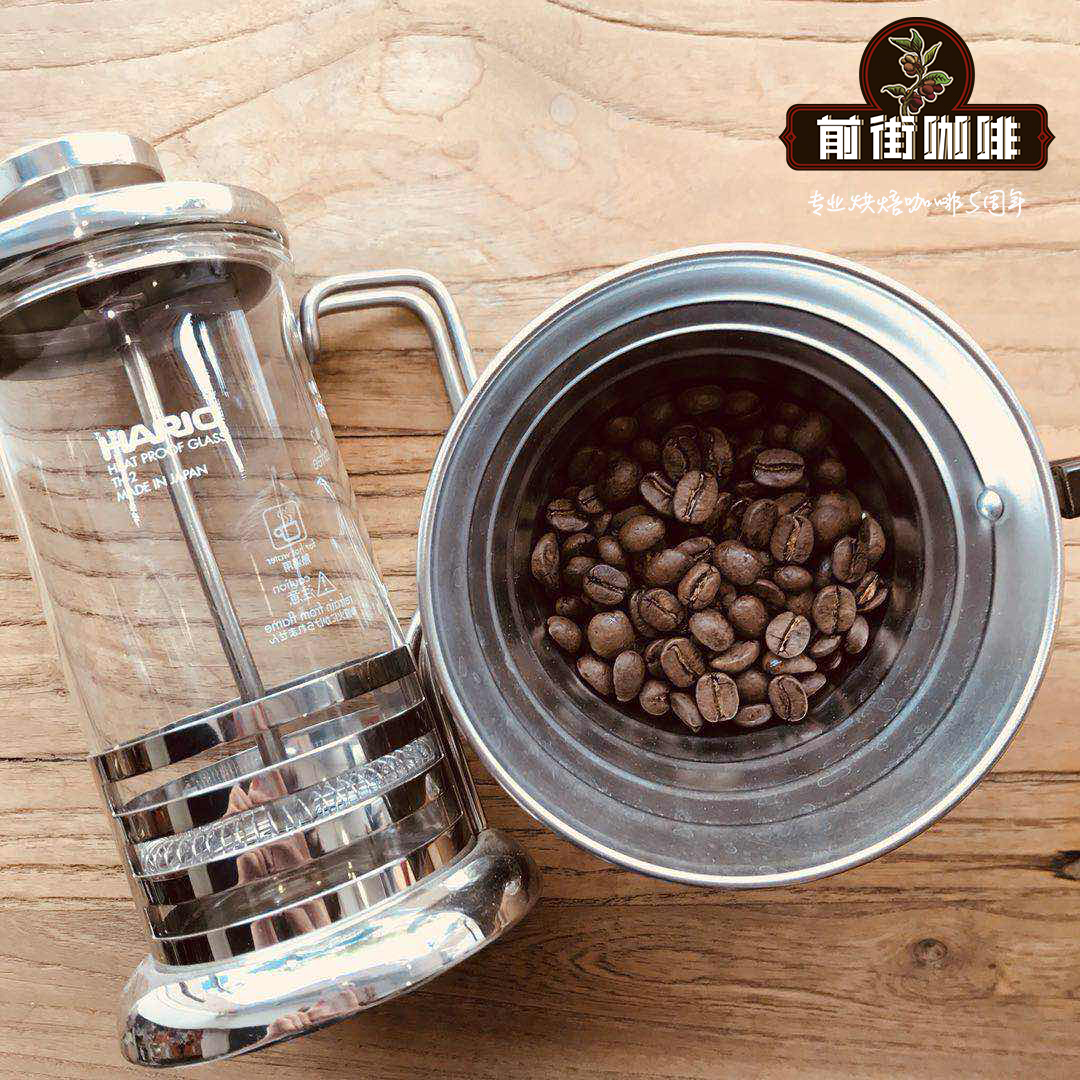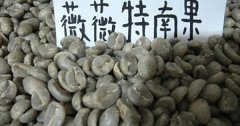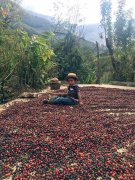Introduction to Salvadoran coffee? What kinds of coffee do you have in El Salvador?

Professional coffee knowledge exchange more coffee bean information please follow the coffee workshop (Wechat official account cafe_style)
Republic of El Salvador, Spanish Rep ú blica de El Salvador, English the Republic of El Salvador.
It is located in Central America, bordering Guatemala and Honduras in the north, and the Pacific coastline in the west and south.
It is the smallest country in Central America and the most densely populated country in Central America. The land area is 21393 square kilometers, the population is 6.25 million (data 2012), and the population density is 327 people / square kilometers.
The economy is dominated by agriculture, with a per capita GDP of US $3722 in 2011. Agricultural products are mainly coffee and cotton.
The country is divided into 14 provinces, 7 of which produce coffee.
There are more than 20 volcanoes in the territory, known as "the country of volcanoes". The lowest elevation in the territory is 0 meters, and the highest is 2385 meters of Santa Ana active volcano.
It became a Spanish colony in 1524.
Independence from Spain in 1821.
In 1824, he joined the Union of Central America, including Guatemala, Honduras, Nicaragua, Costa Rica, and Mexico.
In 1841, he seceded from the Union, became independent, and established a republic.
Coffee country profile: El Cafe de El Salvador Coffee country profile: El Cafe de El Salvador
Note: the left is the national flag and the right is the national emblem. The design in the white middle of the national flag is the national emblem.
A brief History of Coffee production
In 1742, coffee was introduced to El Salvador from the Caribbean (1740).
In the mid-19th century, El Salvador's original export pillar indigo (Indigo, a kind of dye) industry received a gradual decline in the development of synthetic dyes in Europe, and coffee gradually became the main export product under the leadership of the government.
In 1856, the first 693 bags of coffee beans were shipped to Europe. Europe was El Salvador's most important coffee customer until World War II, which was replaced by the United States after World War II.
In the 1970s, El Salvador produced a record 350000 bags of coffee. As the civil war intensified, the coffee industry was in turmoil.
Coffee production in El Salvador was once influenced by the domestic political situation. In 1992, the parties signed a peace agreement and the civil war was suspended. The coffee industry began to recover.
Present situation of coffee production
Natural and man-made disasters are the most appropriate description of the challenges facing the coffee industry in El Salvador. Despite getting rid of the haze of war, El Salvador's coffee production still faces challenges from time to time, including: 1998, hurricanes; 2001, earthquake; 2002, volcanic eruption; 2012, leaf rust, storm; and so on.
Despite the challenges, El Salvador maintained a high coffee production, and according to ICO Coffee International, total coffee production in El Salvador remained at the Top15 level among ICO member countries from 2008 to 2012. In 2013, affected by the leaf rust disaster, 70% of domestic farms were infected, and the output dropped sharply by about 40%, falling to 16.
Brief introduction of coffee producing countries: El Salvador Cafe de El Salvador
Coffee variety
The civil war caused chaos and affected economic development, but ironically allowed the ancient coffee to be preserved, and the situation was so chaotic that coffee producers in El Salvador failed to catch up with the renewal of coffee varieties in Central and South America.
El Salvador produces 100% Arabica coffee, of which 68% is Bourbon, Coffea arabica var. Bourbon), 29% Pacas, other varieties including Pacamara,Caturra, etc.
The Pacas variety, first discovered in El Salvador in 1949, is a natural hybrid between bourbon and Catura.
The variety Pacamara, which was artificially bred by pacas and maragogipe (or maragogype), was first bred in 1958 (1954). Pacamara is a rare excellent variety under artificial breeding, which is better than blue, and perfectly inherits the advantages of the mother plant. It not only has the excellent taste of pacas, but also inherits the large size of malagogipe. The Pacamara species is thought to be the result of the pursuit of large Arabica species.
Coffee planting
Most of them are planted by small farmers. Classification of farmers in El Salvador:
Small farmers, small producer, area less than 7.0hect
Medium-sized peasant household, medium producer, area between 7. 0-70hect
Large farmers, large producer, the area is larger than 70hect.
Farmers use traditional planting methods, with almost 100% shade planting.
Note: 1 hect hectare = 10000 square meters = 15 mu
Coffee harvest
Pick by hand.
The harvest season lasts from October to March. The peak occurs from November to February.
Brief introduction of coffee producing countries: El Salvador Cafe de El Salvador
Coffee treatment
Wash and dry in the sun.
Coffee grade classification
According to altitude, the highest is SHG:
SHG,strictly high grown,3950 feet (about 1200 meters) or above
HG, high grown, 2950 feet (about 899m) above
CS, central standard, 1960 feet (ca. 597m) and above.
Note: 1 feet feet = 0.3048 meters
Coffee export
Raw beans are exported throughout the year, and raw beans are stored in the warehouse in the form of shelled beans.
Brief introduction of coffee producing countries: El Salvador Cafe de El Salvador
Coffee producing area
Seven of the country's 14 provinces produce coffee, with important producing areas including Charat Nango (chalatenango) and Santa Ana (santa ana).
El Salvador divides the producing area into six mountain systems.
Charat Nango production area is famous for its outstanding performance in coe events in recent years. Some farmers in this area began to plant Pacamara in the 1990s. In 2006, a small farm in the region played in coe with pacamara and won the runner-up in the race with a fascinating flavor. In 2007, several farms in the area took part in the competition with pacamara. As a result, they won the first, third and fourth places, and became famous in the pacamara of chalatenango and ta.
Brief introduction of coffee producing countries: El Salvador Cafe de El Salvador
Flavor and quality of coffee
El Salvador is a producer of high-quality commercial Arabica beans. Since 2003, he has joined the COE competition.
With excellent ancient coffee, successfully entered the boutique coffee market.
Coffee flavor is related to the microclimate of the producing area. On the whole, Salvadoran coffee inherits the mild quality of Central American coffee. It is soft, slightly sour and has beautiful sweetness, so it is suitable for blending.
Boutique Salvadoran coffee can also be impressive, including some pacamara varieties, which show active acidity, layered and deep taste, and a long finish.
Coffee organization
The Salvadoran Coffee Association CSC, Consejo Salvadoreno del cafe (salvador coffee concil), which is involved in coffee promotion, data collection and international cooperation.
Important Notice :
前街咖啡 FrontStreet Coffee has moved to new addredd:
FrontStreet Coffee Address: 315,Donghua East Road,GuangZhou
Tel:020 38364473
- Prev

Kaddura Coffee is washed at Vivette Nango Chateau in Guatemala, and the calcareous soil makes it special.
Professional coffee knowledge exchange more coffee bean information please follow the coffee workshop (Wechat official account cafe_style) Guatemala Huehuetenango Finca El Milagro SHB EP Guatemala Vivetnam fruit chateau washing Kaddura acidity: ◆◇◇◇◇ sweet: ◆◆◆◇◇ bitter: ◆◇◇◇◇ sweet: ◆◆◆◇◇ roasting: medium roasting
- Next

Panama Hartman Manor coffee beans characteristics and flavor and the origin of the manor and other stories, briefly talk about a few
Professional coffee knowledge exchange more coffee bean information please follow the annual international cup test competition held by Coffee Workshop (Wechat official account cafe_style) in recent years and the emergence of the competition "Best Coffee in Panama" Best of Panama and Panamanian Jade Manor (Hacienda La Esmeralda) has completely changed, this bid has attracted global attention in addition to the attraction of coffee itself.
Related
- Does Rose Summer choose Blue, Green or Red? Detailed explanation of Rose Summer Coffee plots and Classification in Panamanian Jade Manor
- What is the difference between the origin, producing area, processing plant, cooperative and manor of coffee beans?
- How fine does the espresso powder fit? how to grind the espresso?
- Sca coffee roasting degree color card coffee roasting degree 8 roasting color values what do you mean?
- The practice of lattes: how to make lattes at home
- Introduction to Indonesian Fine Coffee beans-- Java Coffee producing area of Indonesian Arabica Coffee
- How much will the flavor of light and medium roasted rose summer be expressed? What baking level is rose summer suitable for?
- Introduction to the characteristics of washing, sun-drying or wet-planing coffee commonly used in Mantenin, Indonesia
- Price characteristics of Arabica Coffee Bean Starbucks introduction to Manning Coffee Bean Taste producing area Variety Manor
- What is the authentic Yega flavor? What are the flavor characteristics of the really excellent Yejasuffi coffee beans?

